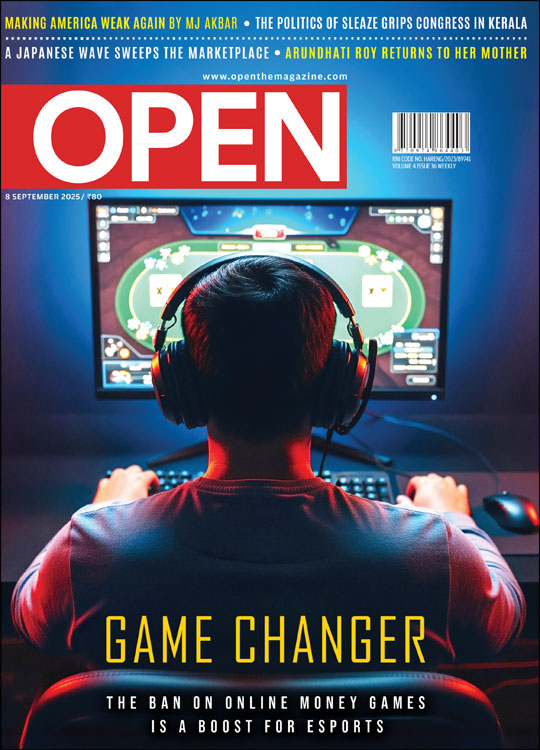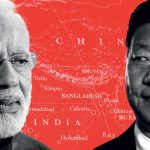CULTURE KOMBAT
Does everything from the casting of Priyanka Chopra to the location where the biopic of the boxing legend was shot only bring out Bollywood’s ethnic caricature of North-Easterners?
 Lhendup G Bhutia
Lhendup G Bhutia
 Lhendup G Bhutia
Lhendup G Bhutia
 |
03 Sep, 2014
|
03 Sep, 2014
/wp-content/uploads/2015/11/culturecombat-main.jpg)
Does everything from the casting of Priyanka Chopra to the location where the biopic of the boxing legend was shot only bring out Bollywood’s ethnic caricature of North-Easterners?
Several years ago, I found myself in the apartment of a close friend, introducing myself on camera. I mentioned my name, what I did, and where I came from, as required, and then began to read from a prepared script. “No, no,” my friend said, after some time. “You are doing it all wrong. Read it with an accent… Do it in a Japanese accent.” She was helping a casting director look for an actor who could play a middle-aged Japanese businessman for a TV commercial, and since I have Northeast Indian features, she thought I could give it a go. But like my friend, I had never been to Japan, never even interacted with someone from those parts. So I worked out an accent that I now suspect was part-Chinese and part-imagined-Japanese, but with which my friend was convinced I had nailed the part.
I never got that role. Not because of the accent. They eventually decided to not have the Japanese character speak. Also, the casting director felt I didn’t look old enough for the role.
A few days later, during a party at the same friend’s house, for some reason, we began reviewing the footage of the auditions. The contents of the audition tapes, plugged from the camera into a large flatscreen TV, made the room reverberate with laughter. The whole affair of actors trying to imitate a Japanese man was hilarious. But as we jumped from one tape to another, as we thrilled over one helpless actor after another attempting the accent, I couldn’t help but notice how every single actor who had auditioned for that role was from a Northeastern state. By the time my friend explained to me that almost all Japanese or Chinese characters in Indian commercials are performed by actors from the Northeast, the party was engrossed in raucous mirth. In my unquestioning youth, in that attempt to fit in with the ways of a new city, I performed my rendition of the Japanese accent. More laughter ensued.
Back then, I never wondered why there is almost a complete absence of individuals from the Northeast on TV and in mainstream films. Why when you do encounter a Northeastern actor, it is always him or her playing a Far Eastern character. But I realise now, having lived in Mumbai and various other cities for long, how easily all of this fits in—Northeastern waiters in Chinese restaurants, Northeastern watchmen at building gates, and Northeastern actors as Japanese characters on TV. It’s not that type of racism where someone calls you names or whispers ‘Chinki’ in your ears. That happens too. But this is different. It comes from that same wellspring that fosters racist slurs and violent abuses. Except, this is less obvious and never questioned.
But now India’s largest cultural industry is interested in the story of one of the region’s greatest individuals. Bollywood is releasing a biopic on the famed boxer Mary Kom this week. Titled Mary Kom, the movie does not just feature Northeastern actors playing Northeastern roles. The entire film is based around the story of a living Manipuri legend. How do we react to this? Should we celebrate the inclusion of this region by the nation’s mainstream? Or is this grand film, with one of the country’s biggest female stars and a top producer backing it, on one of the region’s most famous daughters, in its casting and portrayal, as indicative of the malaise that afflicts the rest of the industry?
In 2012, there was outrage among Indians across the world. Ashton Kutcher had appeared in a US commercial playing an Indian character named Raj. He had painted his face brown, worn a large wig and moustache and spoke with a caricatured Indian accent. The outrage spilled from newspaper editorials and TV channels to social media, until the advertisement was deemed racist, its makers issued an apology, and the parts featuring the character Raj were pulled down.
Yet, save for the few protests by some individuals from the Northeast on social media, there has been no discussion over the casting of Priyanka Chopra, a Punjabi actress who with the help of makeup and perhaps some prosthetics plays Mary Kom. In the film’s poster, a close-up shot of Chopra in boxing gear, she squints her eyes, draws her nose back and juts her teeth out in a grimace to emphasise what appear to be worked-upon slant eyes, higher cheek bones and a prominent jaw. In the film’s trailers, she pronounces words like ‘save’ as ‘shabe’, ‘boxer’ as ‘bhoxer’, and ‘fighter’ as ‘phiter’ and speaks in that strange accent that many mainland Indians think Northeasterners speak in. The truth is no one in the Northeast speaks in that manner. Not even in Nepal. They don’t even call sahibji, saabji. If blackfacing and yellowfacing—the practice of using black and yellow makeup in Western theatre and films to make White actors play Black or East Asian characters respectively—is considered offensive and racist, it is difficult to imagine why Chopra playing Kom, with the aid of makeup, isn’t. How different is she and the film from many other Indians who pinch their eyes and say Northeastern Indians are Indians with their eyelids pulled back? There are, of course, actors from the Northeast in the film. But they just hang around in the background looking Northeastern.
The director of the film, Omung Kumar, dismisses the grievances of those upset by the casting of Chopra as Kom, and says his choice was driven by reasons of commerce and talent. He says on the phone, “Chopra is not just a fantastic actress. She is a big star who can draw in audiences to watch a film.” When I ask him if he ever considered casting an actor from Manipur or Northeast India, he says, “If I had done so, no one would have come to watch it.”
Last year, photographs of Chopra using prosthetics by makeup artists from the US to achieve Mongoloid features were suspiciously leaked on the internet. According to Kumar, this was part of the various looks Chopra was initially trying out on her own. “But none of those early attempts were working and we decided to stick to the makeup done by Uday Shirali. Those gave us the best results,” he says. According to an article in Business Standard: ‘In a process that took an hour to complete every day, [Shirali] started by adding a solution that makes the eye smaller and used three shades on the eyelids to give them a northeast-Indian appearance. He then lightened the eyebrows with bleach, used pinkish tones to replicate the famous “apple cheeks” of the hills and, somewhat inexplicably, decided to add freckles that Kom does not have.’
What makes the casting all the more disconcerting is the near absence of the Northeast or any actor from this region in mainstream cinema. The last time someone depicted a northeastern state was the Mani Ratnam film, Dil Se, where the lead actress, the Nepal-born Manisha Koirala—chosen, as Aishwarya Rai told Rediff, for her “small eyes”—plays a terrorist from Assam. The most popular Bollywood actor from this region is the Sikkim- born Danny Denzongpa. And he is mostly known for his villainous roles, with his most popular performance arguably being the role of Kancha Cheena in Agneepath. ‘Kancha’ means boy, in Nepali, and Cheena, Chinese. Those few actors who get to appear on screen usually always play an East Asian character.
Ask any Northeastern actor trying to make it in Bollywood and the TV industry, and they will tell you what countless filmmakers and casting directors have told them, directly or in a roundabout fashion. They don’t look Indian enough. But now with Mary Kom set to release, it appears Northeasterners are not good enough to play even themselves.
When the news of Kumar wanting to make a biopic began doing the rounds a few years ago, the news created much excitement among actors from the region. The talented Assam-born actor and filmmaker, Kenny Basumatary—who a few years ago made and secured a national release for an ultra- low-budget martial arts film, Local Kungfu—wanted to be part of the film. Basumatary had so far only gotten to play small roles in Bollywood films like Shanghai and Phata Poster Nikla Hero, or that of Chinese characters in commercials or TV shows, and had himself harboured dreams of directing a film around Kom’s life. “I have been following Kom’s life closely for several years. For us people from the Northeast, her story is inspirational. And I had wanted to make a film about her,” Basumatary says. “So when I heard Kumar had got the rights to the film, I knew I had lost my chance. But I still wanted to be a part of it. So I called Kumar and asked him if I could audition for the role of Onler (Kom’s husband). He told me he would get back later.” He got a message on Facebook from the casting director of the film more than a year later. She was looking for Northeastern faces on Facebook. “I play Onler’s best friend now,” he says, when asked about his role. “I am funny guy; the comic relief in the film.”
The gorgeous Manipuri model and actress, Lin Laishram, who has appeared in countless commercials and walked the runway for some top fashion designers like Tarun Tahiliani, and even worked as an actress with Naseeruddin Shah in his Motley Theatre Group, also called up Kumar. The director asked for her photographs and was considering her for the titular role of Kom. But yet again, the call never came. She learnt later that Chopra had been cast from newspaper reports. Laishram was offered the role of Kom’s sparring partner and friend several months later when she was accompanying another friend to the film’s auditions. “Maybe he felt bad for me,” she reasons. “When I first approached him, I thought they would want to make a realistic film and want to cast an actress from the Northeast as Mary Kom, if not Manipur itself. They chose Chopra instead. And I get that. It is a mainstream film and you want a star for the role,” she says.
Even if one agrees with the argument that Chopra would be a box office draw, how does one explain the casting of the male lead, Darshan Kumar, who plays Onler? Darshan, a Delhi-born Punjabi actor, is a complete newcomer. He, like Laishram, was a part of the Motley Theatre Group. If commercial clout was not a consideration for the role of Onler, which seems to be the case, could it not have been played by an actor from the Northeast? Asked for an explanation, Omung Kumar says, “We had to keep Priyanka in mind. Darshan is a fabulous actor. And, you see, he looks a little pahadi (hilly-area resident) also.” Apart from Darshan, the role of Mary’s father is also played by a Delhi-based actor, perhaps to justify Chopra’s sharp North Indian features. “We wanted to create a world,” says Kumar, “where Priyanka Chopra could fit wonderfully.”
The Sikkim-born actress Geetanjali Thapa, who won a National Film Award for best actress last year for the indie film Liar’s Dice, once had to play a half-Indian, half-Chinese woman who runs a Chinese restaurant in Kolkata. The film, shot in Kolkata and Mumbai, and featuring Ranvir Shorey, was never released. “Today, I thank my stars [for it],” she says. “I was young and I didn’t know the kind of films I was getting in.” After moving to Mumbai, she auditioned for many commercials and film roles, but was often told she did not look Indian enough. Eventually, she got her break with the indie film ID, which garnered a number of awards in the festival circuit. She began establishing herself as an actress in independent productions by following ID with Liar’s Dice, and, now, has just completed an international project, Tigers, with the Academy Award-winning director Danis Tanovic. “I sometimes think of my first unreleased film, playing that half-Chinese girl with straight hair working in a Chinese eatery. I don’t think I would ever have gotten the kind of space I now find myself in, if I gone down that road.”
Films and TV are filled with Northeastern actors playing anyone but an Indian. Basumatary played a Chinese inspector on a TV show called Hitler Didi, before he began to play a Chinese businessman on a show for Channel [V] who specialises in creating rip offs (or rather clones) of popular Bollywood actors. He next plays a Nepali character in an untitled Tigmanshu Dhulia film. Laishram’s future film projects include playing Prateek Babbar’s Nepali wife in an untitled project, and playing the jealous Chinese girlfriend of a villain in the Lara Dutta- starring Chalo China, a sequel to Chalo Dilli. “In the film, my villain-boyfriend, who is also Chinese, captures Lara Dutta and begins to fall in love with her. So I feel jealous and try to imitate Lara,” she says of her role. It is only in one impending project, tentatively-titled Ticket to Bollywood, that Laishram plays the role of someone from an undecided northeastern region. According to this 5’10” tall model-actress, who also worked as a model in New York for over three years, getting work in TV and print commercials in Mumbai with a Northeastern face is more difficult than finding work in New York. Whenever she auditions for commercials, she ticks the box that says ‘foreign’ and not ‘Indian’ because, as she says, she will never be cast in an Indian role. Many of the commercials she acts in are made by Indian production houses for Malaysian and Indonesian markets. “Indian ad filmmakers get to make a number of commercials of a single brand for many markets. They make a commercial for an Indian market with an Indian cast. And they make the same one for a Malaysian or Indonesian market by casting us,” she says.
“Here [in Bollywood] there is discrimination at every step. When you audition for roles, they will tell you they want someone with large eyes, fair skin and sharper features. They will tell you on your face that you don’t look Indian enough. And funnily enough when you get to play something, it is either the role of a vamp or a Chinese woman,” she says. “I can crib about it, feel bad about it, and leave for home. Or I can take it all in and stick around. I have decided to do the latter. I want to see where all this gets me.”
This year, somehow, there has been a spate of commercials featuring Northeast Indians playing themselves. Call it a well- meaning gesture of inclusion or an attempt to cash in on an issue. But something is usually amiss in them. Earlier this year, Tata Salt posters depicted Kom, along with another female boxer with the somewhat discomforting line, ‘Maine Desh ka Namak Khaya Hai’. Even in the latest Kaun Banega Crorepati advertisement, which has garnered much appreciation for featuring a young Northeastern girl in the hot seat asking Amitabh Bachchan and the audience if Indians feel Kohima is a part of India, you can’t help but notice how, apart from the girl and her family, every other Northeasterner depicted is either the stereotypical security guard, cook, or bullied boy. Just two years ago, when Bachchan wished Mary Kom on Twitter for winning a bronze during the London Olympics, he called her a mother of two from Assam.
The 22-year-old Jennifer Deori, who is a student at Tata Institute of Social Sciences (TISS) in Mumbai, was one of the actresses who auditioned for the role of the Northeastern girl in the KBC commercial. The casting director had seen her performance in Local KungFu, where she had enacted a small role, and wanted to cast her. “When I read the script, she told me I appeared too confident. When I asked her to explain, she told me to remember that I was enacting someone from the Northeast, a shy cute village girl who has just come to the city,” Deori recalls. “None of the nearby auditioning actors, perhaps to be telecast in future KBC ads, were being asked to perform their roles in such a way. You might think I am reading too much into it, but I knew what was in her head that day. She wanted me to play a dumb tribal girl who is scared and uncomfortable,” she recalls.
Understandably, many from the Northeast are upset over Chopra’s casting as Kom. Some are concerned about how in the buzz about Chopra deglamourising herself to play Kom, a racist standard of beauty is being perpetuated—about how the use of makeup and prosthetics, and the acquisition of slant eyes and eastern features, counts as deglamourisation. Some speak of the manner in which Chopra has used derogatory terms like ‘junglee bachcha’ as though in endearment to describe Kom. The writer-translator Aruni Kashyap asks, “If we were to go by the buzz around Chopra’s make-up and use of prosthetics to look ‘Northeastern’, I am afraid this film is only going to perpetuate the stereotypes that all of us have been trying to walk away for ages. I am worried the film is going to turn characters from the Northeast into mere caricatures.”
According to Richard Kamei, a Manipur-born student at TISS, the film is unlikely to touch upon issues that may alienate mainstream viewers. Kamei says, “There is likely to be no reference to the insurgency, to the Armed Forces Special Powers Act and the heavy presence of troops, or to people like Irom Sharmila protesting against the Government. Even seemingly smaller things, like the food consumed by the Kom community, which include beef and pork entrails, is unlikely to be depicted. You cannot tell Mary Kom’s story faithfully by removing Manipur from it.” When asked, Kumar claims the film will have little reference to the politics and issues of the Northeast because he has chosen to focus the film on Kom.
V Laishram, who lives in Imphal and tweets as Sandrembi, says, “I read that there are over 50 NE people in the movie playing some characters and background fillers. Perhaps the director felt throwing in some Mongoloid faces around PC will ‘soften’ her noticeably sharp north Indian features. Buddhists monks are lovely to look at but there are no Buddhists monks in Manipur who are seen running around in one of the songs. There are some ‘Manipuri’ verses in a song (Chaori). The language used is Meiteilon, the language of Meiteis, and not of the Kom tribe to which Mary belongs. It looks like there has been a deliberate effort to make the film appealing to the majority—the mainland crowd in India, and Meiteis, who are the majority community in Manipur.” Laishram also points to how Manali and Dharamshala were chosen over any place in Manipur (or anywhere near) for the film’s location. “Just because there are hills, doesn’t mean it will look like the Northeast,” Laishram adds. “But they chose Himachal instead, a convenient place which a majority of the Bollywood crowd is familiar and can easily fall in love with.”
Sanjay Leela Bhansali’s Bhansali Productions, which is producing the film, has been careful to cover all its bases with Mary Kom, perhaps knowing full well the limitations of parading Priyanka Chopra around as a Manipuri. To quell any allegations of the cultural appropriation of a towering personality from a community of people who are already under-represented in popular culture, we’ve been told, through countless media interviews over the past few weeks, about how similar Chopra and Kom are. How both of them hail from small towns and brought fame to their country, Kom through her world boxing titles, and Chopra through her achievements as Miss World and an actress. And how Kom, not very different from her actress counterpart, loves to change her hairstyles and box with nail polish on her fingernails. At the music launch of the film, they had Mary Kom make an appearance for the press, with Chopra and the director Kumar goading Kom on to speak of how she felt about a Bollywood actress playing her.
But the truth is that however one may push these arguments, what makes Kom’s story fantastic is not just that she is a five-time world champion, a mother and someone who was not born to privilege, but that she comes from Manipur. You cannot obscure that fact by casting a North Indian actor and keep Manipur away. You cannot ignore such a large number of citizens on the grounds that they don’t ‘look’ Indian, and yet defend the appropriation of the first popular success story that comes from that region with the argument that an Indian is playing another Indian.
When the Delhi-based Anannya Baruah was asked why she is making such a fuss about Chopra playing Kom on Facebook, she referred to a quote by the writer Junot Diaz, during a speech on racism at Rutgers University in 2007. Diaz had put it quite eloquently. “If you want to make a human being into a monster, deny them, at the cultural level, any reflection of themselves.”

/wp-content/uploads/2025/08/Cover_Game-changer.jpg)











More Columns
An India-China Complete Re-set? Desirable but Unlikely Krishnan Srinivasan
Kani Kusruti: Locarno Calling Kaveree Bamzai
Return to Radio Kashmir Kaveree Bamzai